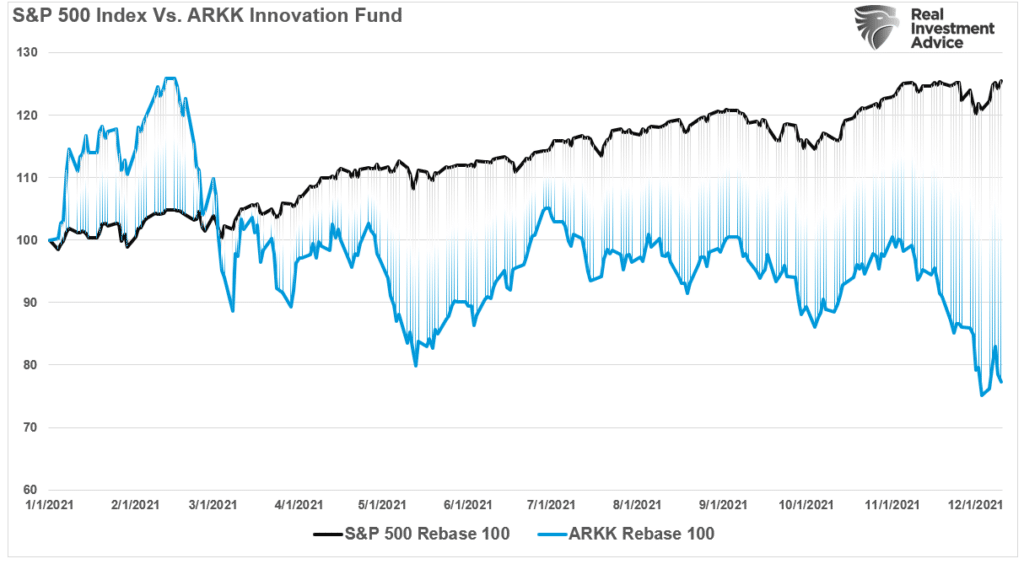
Such was a point we discussed in more detail in "Wipe Out:"
"One of the problems with the financial markets currently is the illusion of performance. That illusion gets created by the largest market capitalization-weighted stocks. (Market capitalization is calculated by taking the price of a company multiplied by its number of shares outstanding.)
Notably, except for the Dow Jones Industrial Average, the major market indexes are weighted by market capitalization. Therefore, as a company's stock price appreciates, it becomes a more significant index constituent. Such means that prices changes in the largest stocks have an outsized influence on the index.
You will recognize the names of the top-10 stocks in the index."
The Nasdaq Bear Market
The same story holds for the Nasdaq, which is also heavily dominated by the same stocks as the S&P 500. As noted, without the support of the top-10 holdings, the year-to-date returns and overall volatility would be very different.
If we look at a sampling of the more "popular" trading stocks, you can understand current retail traders' frustration. A vast majority of 2020 and early 2021's high-flying stocks are down significantly from their respective 52-week highs.
Of course, probably one of the best representations of the disparity between what you see "above" and "below" the surface is the ARKK Innovation Fund (ARKK). While the S&P 500 index was up roughly 27% in 2021, ARKK is down more than 20%. That is quite a performance differential but shows the disparity between the mega-cap companies and everyone else.

As discussed in this past weekend's newsletter, such is a phenomenon.
"After Wednesday's post-FOMC selloff, more than 38% of stocks trading on the Nasdaq are now down 50% from their 52-week highs. Only 13% of days since 1999 have seen more stocks cut in half.
At no other point since at least 1999 have so many stocks been cut in half while the Nasdaq Composite index was so close to its peak. When at least 35% of stocks are down by half, the Composite has been down by an average of 47%. – Sentiment Trader
No comments:
Post a Comment